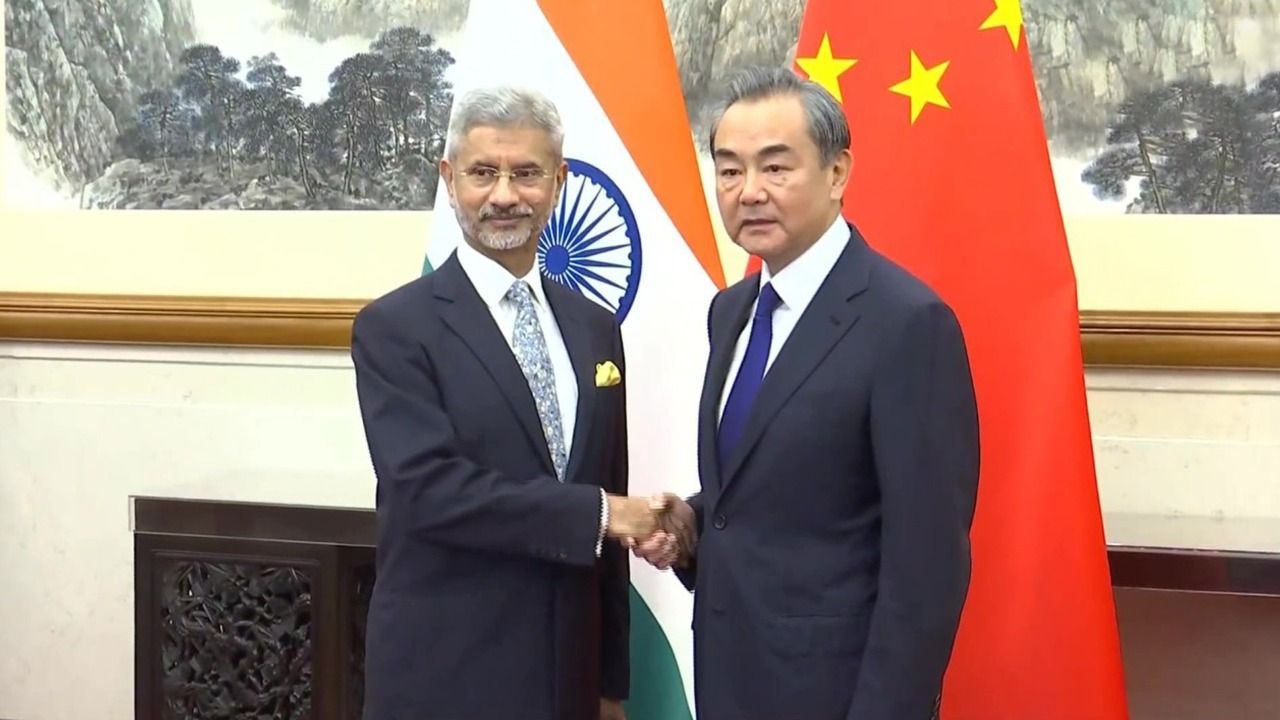As the US is formulating a new strategy to increase all round pressure on China with help of its allies and partners, China has taken some steps to initiate a thaw in its fractured ties with India. Disengagement of troops from Pangong Tso was the first step and now it has been followed up with a phone call between the Chinese Foreign Minister, Wang Yi and India%u2019s External Affairs Minister S Jaishankar February 26. Given that both countries have published separate statements suggest that there were important differences in the tone and tenor of their positions.
Wang proposed that now that the two militaries had completed the disengagement of troops in Pangong Tso, China and India could resume normal bilateral ties. Minister Jaishankar made it clear that India would not allow China to pocket the gains of its illegal occupation in Gogra, Hot Springs and other areas and that %u201Cnormalcy and a border dispute cannot run parallelly as Beijing wants%u201D. Earlier, an Indian External Affairs Ministry official had stated that disengagement from Pangong Tso was %u201Ca significant first step towards resolving the remaining issues with China along the LAC.%u201D
Also Read| Current signals indicate that the USA-China rivalry will continue unabated
Wang Yi, in the traditional Chinese style, blamed India for %u201Chaving wavered and gone in reverse%u201D from its earlier stand of setting aside the resolution of the border issue from strengthening the bilateral ties in economic and other fields. Jaishankar stated that the %u201Cboundary question may take time to resolve but the disturbance of peace and tranquillity including by violence, will inevitably have a damaging effect on the relationship%u201D- a line considered direct and blunt. The two Foreign ministers agreed to establish a hotline for timely communication and exchange of views.
Some Chinese commentators, close to their government, have been writing that India should balance its close ties with the USA and those with China. %u201CIndia should downplay geopolitical issues and just as it has embraced the QUAD (USA, Japan, Australia and India) framework, it should work on deepening cooperation among the BRICS (group of Brazil, Russia, India, China and South Africa) countries%u201D, they have stated.
Also Read | Why the Chinese President Xi Jinping is so insecure?
India took over BRICS%u2019s chairmanship for 2021 from Russia on 15 February. India will host the BRICS summit later this year but its date and venue are yet to be decided. The acronym BRIC was suggested by Jim O%u2019Neill of Goldman Sachs for rapidly growing economies of Brazil, Russia, India and China. Since their first meeting in 2009, the group has expanded to include South Africa and has held annual meetings.
In 2014, with a view to institutionalise their economic cooperation, the five countries established the New Development Bank (NDB) and a Contingent Reserve Arrangement facility to provide protection against global liquidity pressures. NDB has funded 44 projects worth more than $ 12 billion including 8 projects worth $ 3.2 billion in India.
Also Read| China dictating terms to US’ allies; the latter hope Joe Biden wouldn’t play into Beijing’s hands
For China, the BRICS and Shanghai Cooperation Organisation (SCO) are instrumentalities to convey to the USA that if the latter is the leader of Group of 7, China is the leader of the emerging economies and the developing world and while USA%u2019s influence in the global economy and world order is waning, that of China is expanding.
What lessons should India draw from these Chinese moves?
First, that China is under considerable pressure due to the US President Biden%u2019s recent moves to formulate a new policy to win the strategic competition with China. Second, India will play an important role in shaping up of USA%u2019s strategy to contain China%u2019s growing influence in the Indo-Pacific (IP) and deepening of Quad%u2019s activities.
China is trying to drive a wedge between the USA and India by reminding India of its traditional policy of strategic independence and resuming normal bilateral ties with China now that disengagement has been completed in Pangong Tso. Its objective is to achieve tactical peace with India without sacrificing any further territorial gains made in Ladakh post-April 2020.
What makes China so sanguine that it would succeed in achieving this bargain? China thinks that India would be ready to seek peace to curtail its burden of defence expenditure. Also, the prospects of peace and stability on its northern borders and increasing economic engagement with Beijing would persuade New Delhi to strike a deal. It won%u2019t be surprising if Beijing had a hand in persuading the Pakistan army to agree to a ceasefire along the LOC announced on February 25 to sweeten this deal further.
China attaches considerable importance to the expansion of BRICS%u2019s activities, as it is a trans-regional group with participation of emerging economies from Asia, Africa and Latin America with prominent role played by her. In August 2017, China had agreed to pull back its troops from Doklam before a BRICS Summit in Xiamen, China from 3-5 September, 2017 to ensure the participation of Indian PM Narendra Modi in the summit. Whether it would agree to pull back its troops from other occupied areas such as Gogra, Hot Springs and others, to ensure the success of the next BRICS summit, remains to be seen.
Also Read| US Presidential Election 2020: Who will be better for India, Trump or Biden
India is on the right track to insist on disengagement and de-escalation of troops from all areas occupied by China after post-April 2020. India should continue its present policy of deepening strategic engagement with the USA, UK, France, Japan, Australia and other countries both in and outside the Quad.
Past experience has shown that China agrees to make concessions when faced with mounting external and internal pressures. India must demonstrate that it would not allow Beijing to retain the gains of its deceptive transgressions in the Indian territories anymore.
#IndiaChinaRelations #IndiaChinaBorderIssues #UnitedStates #India #China







